Do you have a question about the Hyundai SantaFe and is the answer not in the manual?
Explains how to read and understand the manual's features, safety, and recommendations.
Details recommended unleaded petrol octane ratings and usage of gasohol and MTBE.
Identifies and locates various interior controls and features within the vehicle's cabin.
Details the layout and function of the instrument panel components and indicators.
Illustrates and labels essential components located within the vehicle's engine bay.
Details the adjustment and features of front, 2nd row, and 3rd row seats and head restraints.
Explains the proper use, effectiveness, and precautions for the vehicle's seat belt restraint system.
Describes the function and activation of pre-tensioner seat belts and load limiters in certain collisions.
Provides essential guidelines for the safe installation and use of child restraint systems in the vehicle.
Explains the SRS components, functions, and general warnings related to vehicle airbags.
Details how to record, use, and replace the vehicle's keys and keyless entry system components.
Explains the operation of the remote keyless entry system for locking, unlocking, and alarming the vehicle.
Describes the functions and precautions for using the smart key system for vehicle access and engine start.
Explains how to operate the vehicle's door locks both from inside and outside the vehicle.
Details the operation of power windows, including auto up/down and safety features.
Covers power steering operation, tilt steering adjustment, and horn usage for safe driving.
Identifies and explains the various gauges, indicators, and warning lights on the instrument cluster.
Details how to use the vehicle's audio system, including radio, CD, Aux, USB, and iPod functions.
Outlines critical inspections and checks to perform before entering and starting the vehicle.
Explains the different positions of the ignition switch and their functions for starting and operating the vehicle.
Provides instructions on manual transaxle operation, including shifting, clutch use, and downshifting precautions.
Details the operation of the automatic transaxle, including shift lever positions and smooth operation tips.
Explains the functionality and safe operation of the 4WD system, including off-road driving and tight corner effects.
Covers the operation of power brakes, parking brake, and actions to take in case of brake failure.
Explains how to set, adjust, cancel, and resume cruise control for highway driving.
Describes the Active ECO system's function in improving fuel efficiency and its operational limitations.
Offers driving suggestions to maximize fuel economy and reduce maintenance costs.
Provides essential guidance for driving safely in hazardous conditions like mud, snow, water, and at night.
Details important considerations, weight limits, and procedures for safely towing a trailer with the vehicle.
Explains vehicle weight ratings (GAWR, GVWR) and the importance of not overloading the vehicle or trailer.
Explains the function and proper use of the hazard warning flasher system for signaling emergencies.
Provides guidance on what to do if the engine stalls or a puncture occurs while driving.
Offers steps to diagnose and resolve issues when the engine refuses to crank or start.
Details the safe procedure for jump-starting a vehicle with a discharged battery.
Guides on how to respond if the engine overheats, including checking coolant and potential causes.
Explains the TPMS, its indicators, and actions to take for low pressure or system malfunctions.
Provides step-by-step instructions for safely changing a flat tyre, including jacking and tool usage.
Outlines essential procedures and precautions for safely towing the vehicle, especially for 4WD systems.
Illustrates and labels major components within the engine compartment for inspection.
Emphasizes the importance of regular maintenance and using authorized repairers for vehicle upkeep.
Lists essential checks and inspections that owners can perform to ensure vehicle safety and dependability.
Details the importance and schedule for changing engine oil and filter for optimal engine health.
Guides on inspecting drive belts for wear and damage, ensuring proper tension for engine function.
Explains the function of the fuel filter and the procedure for draining water to prevent system damage.
Details the process for replacing and cleaning the air cleaner filter to maintain engine performance.
Covers inspection and replacement procedures for the climate control air filter to ensure air quality.
Provides instructions for inspecting and replacing wiper blades to ensure clear visibility.
Offers safety precautions and procedures for handling, recharging, and maintaining the vehicle's battery.
Covers essential aspects of tyre care, including inflation, wear, replacement, and alignment.
Explains the function of fuses and provides guidance on checking and replacing them safely.
Details procedures for replacing various exterior and interior light bulbs, emphasizing safety precautions.
Lists the overall exterior dimensions of the vehicle in both inches and millimeters.
Specifies the wattage for various exterior and interior light bulbs used in the vehicle.
Provides details on tyre sizes, inflation pressures, and wheel lug nut torque specifications.
Lists the recommended lubricants, fluids, and capacities for various vehicle systems.
Explains the location and importance of the Vehicle Identification Number (VIN) for registration and ownership.
Indicates where the engine number is stamped on the engine block for identification.
| Brand | Hyundai |
|---|---|
| Model | SantaFe |
| Category | Automobile |
| Language | English |


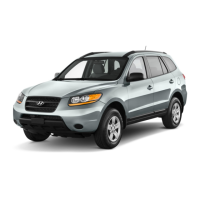
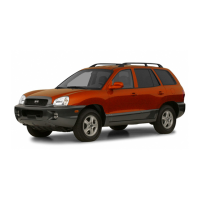

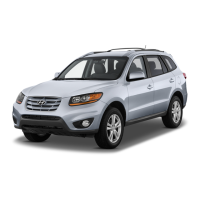


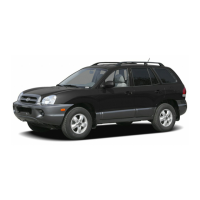

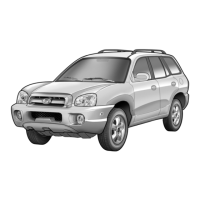
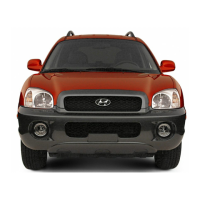
